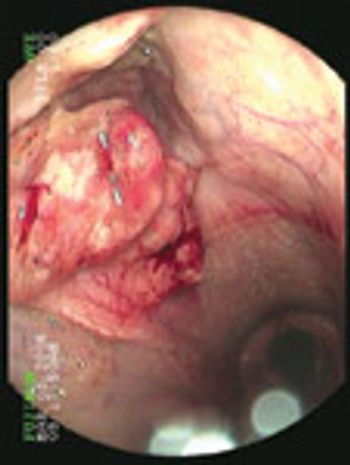
When scraping for Demodex canis, follow these rules from Dr. Paul Bloom, DACVDM, DABVP.

When scraping for Demodex canis, follow these rules from Dr. Paul Bloom, DACVDM, DABVP.

A consistent scale for determining a dog's degree of pruritus would be valuable in any number of ways: for you and your clients to determine whether a dermatologic treatment is working, for clear communication between general practitioners and specialists, for use in studies evaluating antipruritic treatments, and more.

Can team members help catch dermatologic cases by identifying which itch is which? Look at these four photos to see.

Technicians should be performing diagnostic tests, says Dr. Paul Bloom, DACVDM, DABVP, especially skin scrapings.

How you can help itchy pets.

The dirt on skin diagnostics.

Learn the visual cues.

Pulmonary or systemic fungal infections in horses historically have resulted in a high mortality rate.

Answer clients' burning questions.

Demodicosis is a common skin condition in dogs. Dogs have three recognized species of Demodex mites.

Staphylococcus aureus is part of the normal flora of the skin, mucous membranes, urogential tract and alimentary tract of people.

In 25 years of talking to primary-care veterinarians about their struggles with dermatology cases, I am convinced that the major cause of frustration is time management.

The pathogenesis of canine atopic dermatitis is complex and our understanding of it continues to change and advance.

How to unglue a hamster.

Washington -- The Environmental Protection Agency (EPA) will evaluate whether further restrictions are warranted due to a "sharp increase" in incidents from spot-on flea and tick products.

Fort Worth, Texas -- Virbac and Greer Laboratories inked a new alliance yesterday to offer DVMs a comprehensive approach to handling dermatological cases.

Ringworm in animal shelters can lead to almost unmanageable outbreaks, thousands of dollars in diagnostic and medical costs, the possibility of spread to adopters and staff, and an intolerable blow to shelter status in the community.

Cytology is done primarily to identify infectious organisms, in particular bacteria (cocci versus rods) and yeast (Malassezia).

The diagnosis and management of insect bite allergy is still an important part of my specialty practice. I diagnose on average 2 to 3 new cases per week.

The causes of otitis externa can be categorized into predisposing, primary and perpetuating factors.

A multitude of diseases can cause pruritus in the cat, from infectious diseases to allergic diseases to neoplasia.

Information about glycotechonology, T8 Keto Flush, Douxo products, imiquimod, tacrolimus and more.

Cocker spaniels have higher yeast carriage in the ear and it may be easier for the yeast to cause disease.

Multiple new flea control products have been released in the past few years.

There is no magic injection, pill or salve that is going to cure allergies.